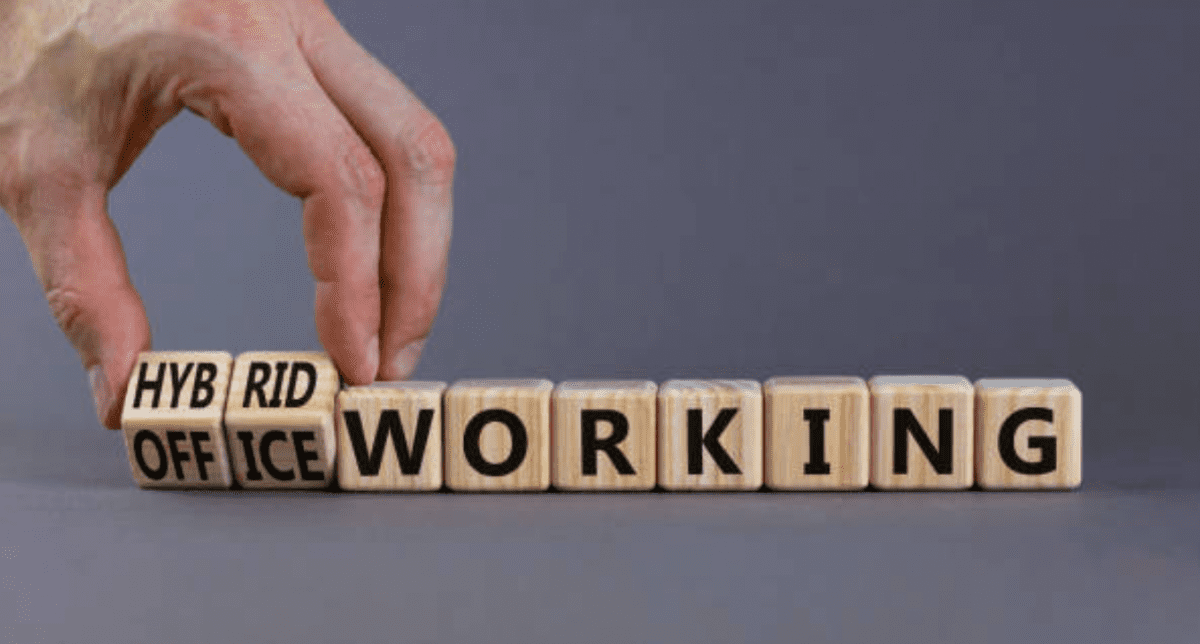No one would argue that work landscape has changed significantly in the last years due to covid-19.
According to a Mercer report, 71% of employers said last year they were going to adopt a hybrid model. And, an Accenture report noted that hybrid workforce models are embraced by 63% of high-revenue growth companies.
Although there is no exact definition and it can vary according to each organization, hybrid work is understood as the possibility of alternating (fixed or flex way) working from home, from a remote location and a central hub or office.
While there are many advantages for organizations and employees in adopting a hybrid model, it needs to be planned and consciously managed to offset some of the disadvantages hybrid work has revealed in the past years. Let´s look at the main drawbacks people have expressed after forcefully adopting this new way of working.
- It diffuses Human Connection: although technology platforms and collaboration tools have taken a quantum leap facilitating access to virtual experiences, human connection and sense of belonging have been diluted. In a virtual configuration, we tend to jump from meeting to meeting focusing on the task and results while investing little time on hanging out and mingling. Some people tend to experience weariness, loneliness, and disconnection.
- If not carefully planned, cross group collaboration can drop dramatically, and organizations might become more siloed: some organizations are already reporting an impact on sharing collective wisdom and innovating. Although spending face to face time is a possibility, it´s not always assigned to becoming more collaborative.
- Remote vs On Site Mindset: There are different shared beliefs by remote workers vs on site workers. Often people working from home can feel their career development is being impacted due to a lack of connection with their peers and/or leaders. We sometimes tend to believe we need to be “visible” to be considered by people who have decision making power in our careers. This might drive some additional tension to the implementation of the working model.
Human connection and sense of belonging are key to create a trusted environment and develop a high-performance culture.
So how can we as leaders, foster belonging in a hybrid environment?
- Make face-to-face time count: no virtual experience can replace the physical connection, so plan and invest purposefully your time together — it´s precious and needs to be taken care of. Building and growing your “WE” into trusting and collaborative relationships is the best use of your time. Plan for formal and informal gatherings to strengthen your bonds and get to know each other.
- Get to know your people — plan for 1:1s: We all come from different places, are immersed in different contexts, and have different needs. Let´s not approach our teams with a “one size fits all mindset”; ask your team what they need to feel more connected with you, the team, and the organization in this configuration. Make connection and sense of belonging part of your ongoing conversations and periodically assess with each team member their level of connection.
- Encourage mentoring / peer sessions: Developing a mentoring program creates a safe container for people to come together and share own experiences, wants, and needs. People feel heard while being challenged to adopt new mindsets. Mentoring has proven to be a great mechanism to help people grow in all 3 dimensions (I / WE / IT).
- During hybrid meetings, start with remote workers: Hybrid meetings can be messy and ineffective; it´s harder for remote workers to follow through and for onsite workers to be mindful of those who are accessing virtually. Before starting the meeting make sure you have the right technology in place so everyone can clearly hear the conversation that will take place in the room and in each virtual space. During the meeting periodically pause and check with the team how are they experiencing the meeting. Make sure you always give priority to remote workers to voice their opinion first without being overran by others. Setting clear ground rules is key for leading effective meetings.
- Foster vulnerability & authenticity: showing up and being seen as who we truly are with our own strengths and opportunities bring us together. Embracing others without judegment and with compassion creates an inclusive culture. As leaders, we have a key responsibility in role model an inclusive leadership inviting others to do the same.
Implementing a successful hybrid work model requires more than ever creating an inclusive environment where people feel connected and have a strong sense of belonging.
It´s not about making the model itself work, it is about consciously managing our culture and creating the right conditions to enable people develop to their full potential in any given working environment.



